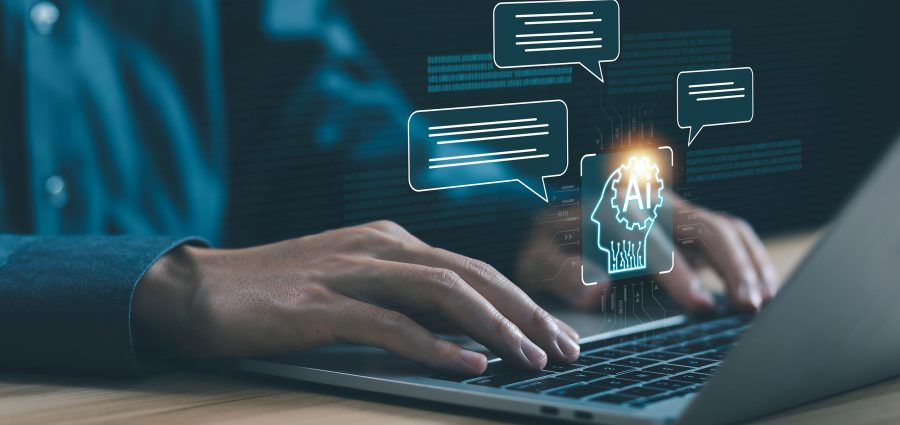Editor’s Note: This is the second installment in our ‘Executive Input’ blog series sponsored by DataXstream that extracts key takeaways from short interviews with distribution executives — often answering three straightforward questions about challenges they are trying to solve with technology. These leaders could opt to have their name and company omitted from the blog to speak freely. Keep an eye out for more to come.
————————
Do humans instinctively crave sameness — the ability to enter new environments without disrupting our comfort zones? Our fascination with “mer people” is telling evidence … from ancient sailing folklore to Aquaman, we’re intrigued by the idea of dwelling in oceans or land with equal ease. But seamless experience from one environment into another is not a thing of fiction alone. Right now, we see distributors that are eager to build an “Atlantis” experience for their customers — not moving from water to land, but from analog to digital, and back again.
The new frontier of customer experience is playing out on the eCommerce stage, and one challenge before the distribution industry is how to offer B2B customers a seamless experience with enhanced self-serve capabilities. You know, allowing customers to control their ordering and account destinies — like what they, as consumers, expect every day, whether filling an Amazon cart, ordering fast food or conducting mobile banking with a cell phone.
One U.S.-based global distributor of semiconductors and other electronics components has built its digital strategy in part around the value of sameness. In other words, the customer shall encounter the same level of capabilities and service, whether they choose to encounter the company online or offline — self-serving, emailing or old-school telephoning.
Odd as it sounds, sameness matters because people are different.
“What we are seeing here in the distribution industry is a vast, vast difference in digital maturity among the different players,” observes the CIO of this 20+ billion-dollar distributor. “And this diverse maturity is across the entire customer spectrum. Similarly for suppliers, a lot of the largest suppliers are actually pretty far in their digital transformation journey, but there are still some smaller ones that are still working through digital adoption. That said, we pride ourselves for being a very customer-centric, relationship-focused organization. That is how we win in the market.”
He emphasizes the company’s No. 1 mission to create a seamless omni-channel experience for all their stakeholders, both customers and suppliers. “If the customer begins something online, they should be able to continue that offline without having to go through the whole process again. We are not forcing everyone to go to our digital platform. We allow them to decide and choose how they want to transact; how they want to work with us.”
In addition to seamless omni-channel, this distributor’s strategy has three additional priorities, each built upon customer feedback they’ve heard and executed.
1) Reduce friction. “How we reduce manual interventions when suppliers they transact with us, and when we transact with their downstream customers,” the CIO explained. “Customer self-service is not restricted to the portal, itself — it can be an API connectivity. It can be a completely automated process that flows through the entire value chain. That is what we want to get to. And with the advent of AI, there’s going to be a lot of this automation going on where AI agents or ‘digital workers’ are making decisions based on different conditions.”
2) Provide actionable insight. “We have a wealth of data, because we work with both the upstream and downstream customer,” says the CIO. “So, they expect useful business insights from us.”
3) Offer new capabilities and technologies. “This is what customers want us to bring to the market for them — not just transactional, not just checking of status, but also design tools allowing them to go to our digital environment to create a board diagram that can automatically generate a BOM [bill of materials] list , automatically request a quote, and turn it into a supply chain schedule or sales order for which they can then track the status moving forward.
“Those are the different capabilities our customers are looking for,” he summarized, “and that’s why we focus our digital strategy on these four areas: seamless omni channel, frictionless transaction, actionable insight, and sophisticated technology.”
See More in This Series
- AI, ERP Top CIO Hot List (Nov. 19)
- Counting Down to a Self-Serve World: Who Will be the Pumpkin When Midnight Strikes? (Dec. 2)
Related Posts
-
Southwire enhanced its capabilities with its new Dallas Fort Worth Customer Service Center, holding a…
-
The partnership combines OneRails tracking features with Moblico’s mobile apps, offering end-to-end visibility of deliveries.
-
The partnership will strengthen Suppli’s digital accounts receivable service relationships with AD members.






